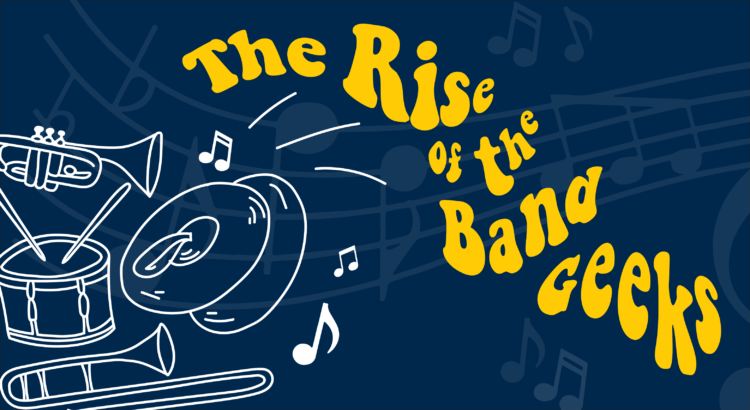Tungsten clouds flattened as they scraped along the dome of the stadium, the residual howl of their wind battling the sonic boom of the multitude for dominance. Within the confines of the band section, instruments bellowed and slammed into the rattled air, stunning anyone unfortunate enough not to have earplugs, and shot their notes toward the field. Cymbals smashed a vicious beat over the intricate, layered rhythms of the drums. Fierce, dark waves from the trombones blasted forth in ominous fronts that seized the hollow wind and regurgitated it as menacing music.
And the TV station, as per usual, completely ignored them.
Hal chopped his arm back and forth to the explosive cymbal crashes, throwing his shoulder forth and thrusting his upper body toward the football players as though they would acknowledge him. They were too far from the band, crouched as they were at the 45 yard line, and their backs were to the north end zone where the band gathered. Of course, the chant wasn’t directed at the Michigan football players; rather, it was meant for the opposing team, who had just fumbled the ball in the most spectacular fashion.
Hal and the other drumline reserves were not allowed to chant along with the student section for a very specific reason, but nothing prevented him from singing along in his head. The mantra was an adrenaline rush, a ferocious vocal tacked over an exhilarating spew of domineering energy and sound.
He unleashed his fury in the form of a scream that flooded his ears but was easily trounced by the band. Primal, feral, in perfect time, it blended with the shout of the rest of the cymbal line, his one sheer thrill forgotten in the chaos.
He wished he was able to play along with the rest of the band, but the cheer was the closest approximation he could get this season. A freshman in the cymbal line, he’d never really stood a chance to make the performance block this year, and he had only a small chance to make it next year. He’d practiced incessantly, but he was inexperienced and not as strong as the upperclassmen, who performed advanced visuals with seemingly little effort.
Hal loved marching band immensely, loved the cymbal section (it was objectively the best instrument), the people in it. Loved screaming and dancing in the stands every Saturday with his band friends. But there was a tickle in his mind, a gnawing, nagging sensation at the back of his throat, the tiny demon that numbed his arms and chipped away his resolve.
At the moment, with his arm gouging the wind and his intense glare fixated on the football players pooling around the 45 yard line, he was a machine. A maize and blue warrior launching an offensive against the wind and against silence, smushed between two of his fellow reserves who pummeled the air with similar malevolence. All thoughts silenced except the two-word mantra and the swell of the trombones. Tension building, building until it climaxed in a minor duo of notes, a final crash, and then–
Uproar.





